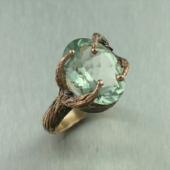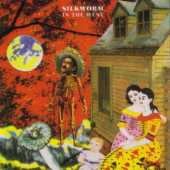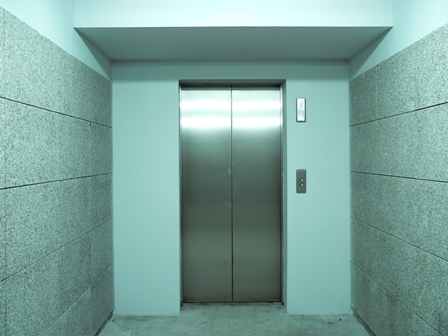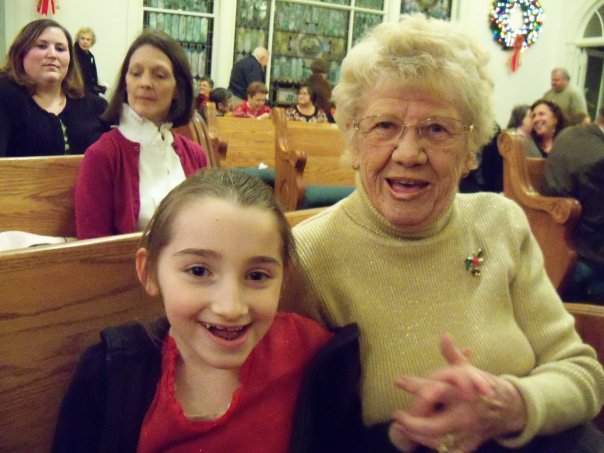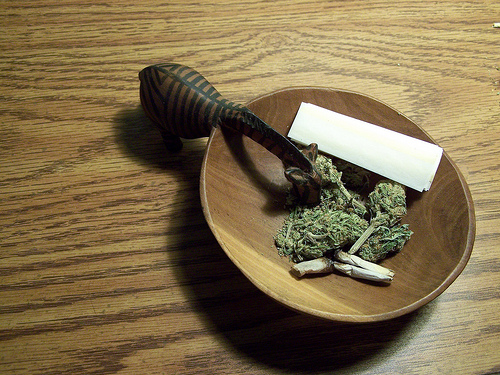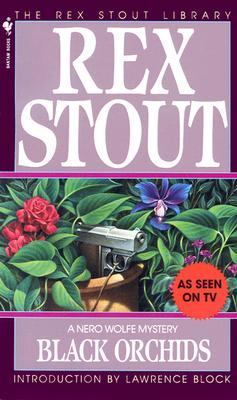Nulcear Weapons 1 - Leo Szilard
Radioactive elements were first isolated and studied around 1900. In 1933, Leo Szilard, a Hungarian physicist, was the first to suggest that the chain reaction of radioactive elements could be used to construct a bomb. He left Hungary for Berlin in 1919 and studied at the Institute of Technology under people like Albert Einstein. He got his doctorate in physics in 1923 from Humboldt University of Berlin. He worked as a physicist and inventor in Berlin for the next decade.
On a trip to London in 1933, Szilard read a paper that was critical of the idea that atomic physics could be harness to produce energy. He was so annoyed with the tone of the article that he conceived of the idea of a nuclear chain reaction. If a neutron could trigger a nuclear reaction that produced a neutron, a self-sustaining chain reaction could occur. He returned to Berlin and began research to produce such a chain reaction. In 1036, he filed a patent for his idea with the British Admiralty.
In 1938, Szilard was invited to do research at Columbia University in Manhattan, New York. He was shortly joined by Enrico Fermi who he knew from Berlin. In 1939, a group of researchers in Germany announce that they have achieved nuclear fission with uranium. Szilard and Fermi conducted their own experiments with uranium and were soon able to produce neutrons that multiplied as the reaction progressed, proving that a nuclear chain reaction was possible.
The knowledge the Germans were working on a nuclear chain reaction that could be used to create a devastating weapon was a great concern to Szilard. He drafted a letter to the U.S. President, Franklin D. Roosevelt. He talked Albert Einstein in to cosigning the letter. This was ironic because Einstein was a famous pacifist. The letter outlined the possibility of nuclear weapons, the fact that the Nazis were working on the problem and the need for a nuclear research project in the United States to develop such a weapon. The letter was drafted in August of 1939. In September of 1939, Germany invaded Poland. This invasion is often seen as the start of World War II. The letter was not presented to Roosevelt until October of 1939.
Upon receiving the letter from Szilard and Einstein, Roosevelt created the Advisory Committee on Uranium. The Committee met quickly and authorized six thousand dollars for Fermi to do neutron experiments at the University of Chicago. The Committee did not pursue uranium research vigorously. Other organizations took over control of the research. Meanwhile the Germans were getting close to a controlled chain reactions but they made a mistake in the composition of the graphite rods they were trying to use to absorb neutrons and control the reaction. Szilard realized that the problem was impurities and made graphite rods that were free of the impurities. The new rods worked as expected and in December of 1942, his team produced the first human controlled chain reaction. In 1942, the Manhattan Engineering District took over the program which became known as the Manhattan project and was dedicated to the create of nuclear bombs.
Leo Szilard:
Lost parakeet gives police his address
The 64 year-old Japanese woman who owns a parakeet named Piko-chan was really thinking ahead when she taught her little bird to recite his own address.
Cassette tape nostalgia, really?
I did not realize that people were genuinely nostalgic for cassette tapes until I read this Cracked.com article. As someone who wrestled with cassette tapes all throughout the 80s all I can say is, "What????"
Bloop mystery solved!
The "bloop" was one of the world's greatest mysteries… until now. This loud deep ocean noise was recorded from several different locations. It followed no known sound forms, and its location could not be pinpointed beyond the general area of the south Pacific ocean off the coast of South America. This ultra-low-frequency sound was extremely loud, carrying for hundreds of miles underwater.
Personal communications and your elevator pitch
Extending this series on personal communications was a no-brainer for two primary reasons: First, many professionals are lacking in personal communication skills. Second, knowing what to say and how best to say it is vital to your job search and to furthering your career.
That said, let’s review the takeaways from the posts in this series thus far.
- Personal communications are similar to professional communications like a resume or cover letter. The difference lies in the intended reader(s) –Personal communications involve a one-to-one exchange.
- Thank you notes, networking letters, interview requests, follow-up phone calls and emails are all examples of personal communications.
- Not to be left out –Your resumes and cover letters should also be tailored and targeted as personal communications, even though some unknown readers will also view them.
- An “elevator pitch” also known as a personal statement is a key example of a personal communication that is vital to everyone.
- You should also start thinking about your social network accounts and all their activity as personal communications -even when set to “private.”
Your 30-second Elevator Pitch
So, what is an elevator pitch, and why do you (and virtually every adult on the planet) need one?
Entrepreneurs seeking funding for their newest business idea first coined the term “elevator pitch.” Their deep-pockets audience and targeted funders are extremely busy, and as it turns out, often easily bored people.
Entrepreneurs needed to craft highly focused, engaging and benefits-packed pitches that could be quickly delivered and digested by their targeted investors. Most will orally rehearse their pitch until they can recite it in the time it takes to ride an elevator twelve floors – roughly 30 seconds.
But investors aren’t the only time-strapped decision makers in the world, and it wasn’t long before the elevator pitch found applications in other venues. Our goal today is to perfect your personal elevator pitch.
Developing your personal pitch
Get a timer and set it for 60 seconds to start. Use any audio recorder on hand, press “record,” and then answer this two-part question out load using impact verbs and strong nouns before time is up:
Who are you professionally, and what do you excel at in your field?
Initially, your objective is to hone in on what your subconscious has to say. Listen carefully on playback, and jot down those phrases and words you like most. Whatever strikes you as interesting, imaginative, playful or even curious should make the list.
Repeat the exercise a few times until a clear pattern (or two) emerges. Ultimately, you will distill the winning pattern of phrases down to a 30-second or under statement that crystallizes who you are and what strengths you offer as a professional in your field.
Next up, we’ll look at some strong examples of personal elevator pitches and why they work. Until then, remember to keep putting your best foot forward and as always, good luck!
One family member short this Thanksgiving
I once attended a church that skipped the sermon the Sunday before Thanksgiving. Instead, everyone was asked to bring in one item that represented what he or she was thankful for that year. Each person would bring the item up to the alter, explain what it meant to them, and why they were thankful for it. I loved this tradition and it really got the eyes of the church members on what the holiday is all about.
This week I was asked by a friend, who also attended that particular church back in the day, what I would put on the alter if the church was still participating in that old tradition. I didn't have to think long. I lost my grandmother on November 5th.
I would place the heart shaped necklace I bought us many years ago on the alter. I had one half of the necklace and she had the other. One half said “Granddaughter” and the other “Grandmother.” That necklace signified the close bond that we shared ever since the day I was born.
This Thanksgiving, I won't be setting a place for my grandmother at the table, but I will be thankful for the 35 years of memories she gave me and for our daily telephone chats. I'll be thankful that she got to know my kids, and that she always showed unconditional love to my youngest daughter, who suffers from a rare neuro-genetic disorder called Angelman Syndrome. My daughter is never expected to speak, yet she somehow was able to utter the word “mommom” whenever my grandmother would enter the room.
My grandmother will be truly missed by all, but I choose to be thankful for her life. Thankful that I got to be a part of it.
Giving thanks, Bill Clinton style
With the holiday season in full swing and Thanksgiving a few days away, many of us will start to reflect on our blessings through a clear and thankful lens that strips away our assumptions and takes stock in how fortunate we really are. On Sunday, the former President called upon those more fortunate to participate in clean-up and relief efforts for New York residents hit hard by Hurricane Sandy.
Bill Clinton and 1,000 volunteers hit Queens area neighborhoods to help residents remove debris and flood waters in the aftermath of Sandy. Both BC and daughter Chelsea Clinton rolled up their sleeves in the effort that was coordinated by the Clinton Foundation and CGI in executing A Day of Action for New York.
On Tuesday, Clinton announced a new initiative his foundation will be undertaking: The Clinton Health Matters Initiative, which will commit to closing health and wellness gaps that are based on income, education and race. The Initiative will begin in California’s Coachella Valley and is so far sponsored by Verizon, GE, Tenet Healthcare and NBC-Universal.
The former POTUS was just named Honorary Chair of the National Breast Cancer Coalition whose goal is not just to cure breast cancer, but to end it by January 1st, 2020. President Clinton likes the organization’s deadline-driven approach, and accepted the position by stating, “It’s time to give breast cancer a deadline.”
While Bill Clinton gives shape to the year ahead, we wish him a happy and restful Thanksgiving celebrated with family and friends.
SPD's Guide to Legal Marijuana Use in Seattle
This year's election set a nation-wide precedent, as both Colorado and Washington moved to outright legalization of marijuana. In Washington, beginning on December 6th it will be legal for adults over the age of 21 to have up to an ounce of marijuana, 16 ounces of "solid marijuana-infused product, like cookies," or up to 72 ounces of infused liquid.
Black Orchids by Rex Stout
In this two-story Nero Wolfe adventure, we first find his man about town assistant Archie Goodwin doing some serious legwork visiting the Flower Show at Grand Central Palace day in and day out. The reason: a unique set of hybrid black orchids grown by Wolfe’s orchid-loving friend Lewis Hewitt on display on the fourth floor. They are not out and out black in color, Archie reports, more like the color of coal, and no, he can detect no sign of withering on any of them.
Wolfe is both nettled by envy and full of curiosity over Hewitt’s “freaks” as he calls them. So much so he does the unthinkable: actually leave his brownstone and brave being driven by Archie to the show to see for himself.
Archie meanwhile is more intrigued by the display for Rucker & Dill Nurseries, or rather, the main attraction of their mock woodland glade complete with a brook and pond: a woman named Anne Tracy who, along with fellow Rucker & Dill employee Harry Gould, are playing a couple out having a picnic. The highlight of the act is at 4 p.m. each day when Harry puts a newspaper over his face and pretends to nap while Anne removes her shoes and stockings, hikes up her skirt, and washes her feet in the pond. As Archie points out to Wolfe, this is when they “crowd the ropes.”
Archie is so smitten with Anne he even claims to Wolfe he is going to marry her. Little does he know his first meeting with her will take place inside the Rucker & Dill exhibit when he notices Gould’s legs are in an odd position nor is he responsive to the playful splash of water Anne always throws on him to complete her feet washing act. Turns out he is dead, shot in the back of the head by a small caliber pistol hidden in a rock pile his head was resting on.
Turns out someone had made off with Lewis Hewitt’s walking stick while he and Wolfe were haggling over his black orchids (which Wolfe wants very badly), set it up against the back door leading into the Rucker & Dill exhibit, and attached a green string connected to the hidden pistol. It also turns out that as Wolfe, Goodwin, and Hewitt were passing by in the corridor while taking a short cut to the third floor. Goodwin saw the stick, picked it up … and inadvertently shot Gould. Who put it there and why is something only Nero Wolfe can unravel, but it is going to cost Hewitt his black orchids.
In the second adventure, Wolfe is approached by socialite Bess Huddleston who is receiving anonymous letters and hires him to find out who is sending them. But before Wolfe can collect his fee on the matter, she is poisoned by a bottle of mock iodine which actually is chock full of tetanus that gets into her bloodstream via an tiny cut in her toe.
Which member of her inner circle did it is a good question, especially since they are a kooky bunch who could have been the cousins of many of the characters from The Thin Man. Wolfe claims he is not interested in finding out whodunit, but Archie isn’t so easily convinced, especially when Wolfe sends some black orchids to Bess’ funeral.
If you are looking for a couple murder mysteries narrated in a lively first-person style, you can’t go wrong with this Nero Wolfe twosome.
Oh No They Didn't: Unique Trust Fall and more crazy dumps
